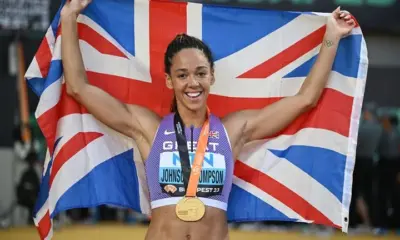Sports
Women’s Cricket in Britain: Equal Pay Movement Gains Momentum

Women’s cricket in Britain has entered a pivotal phase in 2025 as the equal pay movement gains significant momentum. Analysts from BBC Sport, The Guardian, and Reuters note that the issue has garnered widespread public support, political attention, and institutional focus. Players, governing bodies, and sponsors are negotiating frameworks that ensure parity with men’s cricket, reflecting broader societal demands for equality, transparency, and recognition of female athletes’ contributions to the sport.
Progress in Pay Structures
The England and Wales Cricket Board (ECB) has initiated revisions to its remuneration structures, aligning compensation, match fees, and performance bonuses more closely with men’s cricket. Analysts report that the move addresses historical disparities, incentivizes participation, and enhances professional sustainability for female cricketers.
Contract reforms include standardized salaries for central contracts, enhanced match-day pay, and performance-linked incentives. Analysts suggest that equitable pay frameworks strengthen career viability, attract global talent, and increase competitiveness at international tournaments.
Sponsorship and Commercial Impact
Sponsorship support is a key enabler of the equal pay movement. Analysts from Bloomberg and Reuters note that commercial partners are increasingly endorsing equality initiatives, providing funding for women’s leagues, tournaments, and grassroots development.
High-profile partnerships with brands prioritizing social responsibility enhance visibility and provide financial backing. Analysts highlight that commercial engagement reflects growing recognition of women’s cricket as a marketable and culturally significant sport.
Domestic Leagues and Competitions
Domestic competitions such as the Rachael Heyhoe Flint Trophy and The Hundred have been instrumental in advancing the professionalization of women’s cricket. Analysts note that increased prize money, media coverage, and broadcasting partnerships have amplified visibility and audience engagement.
Enhanced domestic leagues serve as talent pipelines for national teams, enabling young players to gain competitive experience and professional exposure. Analysts suggest that investing in domestic infrastructure is critical for long-term equality and sport development.
Media Coverage and Public Engagement
Media coverage has expanded significantly, with broadcasters dedicating airtime to women’s matches, player interviews, and analytical commentary. Analysts report that increased visibility enhances fan engagement, drives ticket sales, and attracts sponsorship, reinforcing the economic case for equal pay.
Social media campaigns amplify player voices, highlight achievements, and mobilize public support. Analysts suggest that active media participation strengthens advocacy for equality and fosters broader cultural acceptance.
Institutional and Policy Support
The ECB, Sport England, and UK government initiatives support structural changes, funding, and policy alignment. Analysts highlight legislative frameworks promoting gender equality in sports, emphasizing compliance, transparency, and accountability.
Education and community outreach programs encourage participation from girls at grassroots levels, enhancing the talent pool and reinforcing the cultural importance of equality in sport. Analysts suggest that institutional backing ensures sustainability of progress and equitable opportunities across cricketing pathways.
International Influence and Global Comparison
The UK’s equal pay movement in cricket aligns with global trends, as seen in countries like Australia, New Zealand, and India. Analysts report that international benchmarking informs policy, ensuring UK players remain competitive both on-field and economically.
Collaborations with international boards, tournaments, and federations enhance standardization of pay, player welfare, and contractual clarity. Analysts suggest that alignment with global best practices positions Britain as a leader in women’s professional cricket.
Challenges and Considerations
Despite significant progress, challenges persist. Analysts note that disparities in audience size, commercial revenue, and historical investment can impact sustainable pay parity. Continued advocacy, negotiation, and resource allocation are essential to maintain momentum.
Logistical considerations, including scheduling, facility access, and broadcast commitments, require careful management to support female athletes while balancing existing commitments within the broader cricketing calendar. Analysts emphasize the importance of strategic planning to sustain growth.
Future Outlook: Towards True Equality
Looking ahead, analysts predict continued advancement of equal pay initiatives in women’s cricket. Investment in youth development, commercial partnerships, media engagement, and institutional support will reinforce professional sustainability.
Emerging talent, bolstered by equitable pay structures and professional pathways, is expected to enhance international competitiveness and maintain public interest. Analysts suggest that cultural recognition of women’s cricket will continue to grow, fostering inclusivity and inspiring future generations of athletes.
Conclusion
The equal pay movement in British women’s cricket represents a transformative era, blending economic equity, professional recognition, and societal progress. Analysts conclude that sustained commitment from governing bodies, sponsors, media, and fans is critical to ensuring parity and fostering a thriving sport.
By institutionalizing equitable pay, enhancing commercial and media support, and nurturing domestic talent, the UK is setting a benchmark for women’s professional sports. As momentum continues into 2025 and beyond, women’s cricket is poised to achieve both on-field excellence and off-field equality, solidifying its place as a culturally and economically significant pillar of British sport.












